Manna Moment Psalm 104:19- "He made the moon for the seasons." God made the moon to mark the seasons. Many people still follow a lunar calendar for celebrating major holidays. One example of this is the Jewish celebration of Passover which is always on the 15th day of the Hebrew month of Nisan. Jesus was crucified following the Passover meal which is why Christians and the Western world will move the celebration of Easter to whichever Sunday follows the Jewish Passover celebration. Because the holiday follows the lunar calendar, Easter always falls on a full moon. Planet Research Presentation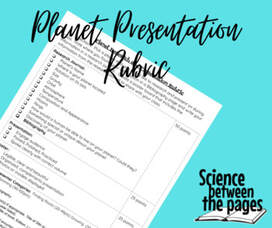 For weeks 9 and 10 of this unit, I am having the students research a planet and present on it. Here is the Planet Presentation rubric that I am using to evaluate them. This includes all the information that I expect to have in the presentation along with points to give for each objective reached. At the bottom of the rubric there are directions on how to write a bibliography. Phases of the Moon Card Game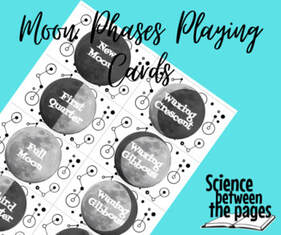 Instructions for playing: For every 2 players, you will need 3 ‘decks’ of cards or 3 sets of the eight phases of the moon.
Characteristics of the Moon Note Taking Guide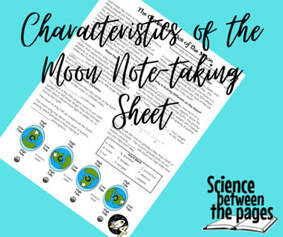 My favorite part of this note taking sheet is the bottom image. It is a great picture of what is happening to the Earth's tides as a result of the moon's gravity. It isolates everything but the movement of the earth so that you can see how we have two high tides and two low tides a day. Other topics included in this guide are:
Craters of the Moon Model This is a great explorative activity. The goal of this activity is to find out what factors affect the size and shape of craters that form when speeding objects strike the surface of the moon Materials Included:
The students were to smooth out a surface of flour, measure their marble and then decide on a height to drop their marble from. After they dropped it, they were to measure the width of the crater as well as the diameter of the ejecta that splattered at impact. They were to document this data and then choose if they wanted to try this at different heights with the same marble OR they could pick different shaped rocks that were lying around outside where we were and drop it at the same height. 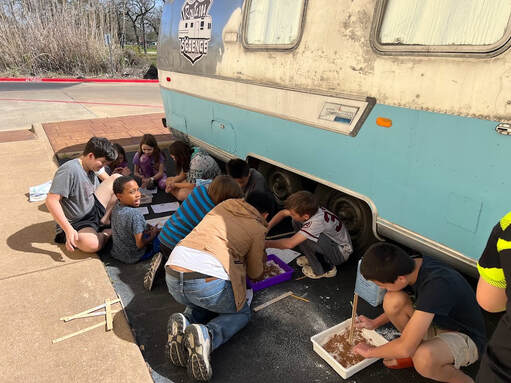 This is a plug for our Route 104 Mobile Science Classroom. It is no coincidence that our scripture for today's lesson comes from Psalm 104, the namesake of our mobile science classroom.
0 Comments
Leave a Reply. |
Lead LearnerWelcome! My name is Nicole Fleming and I have been leading science learning in the Bryan/College Station homeschool community for over 10 years. Archives
April 2023
Categories |
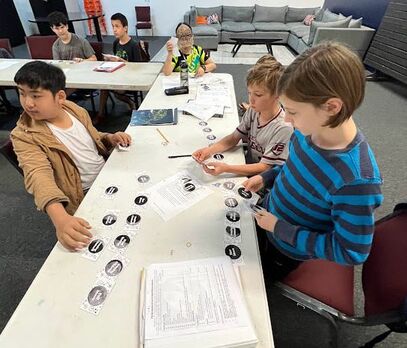

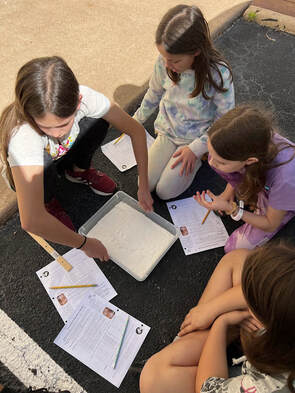
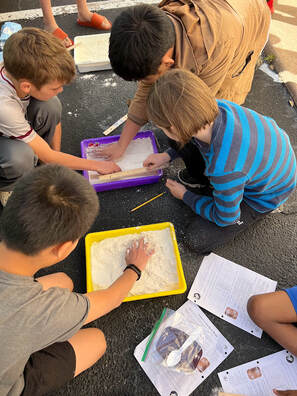
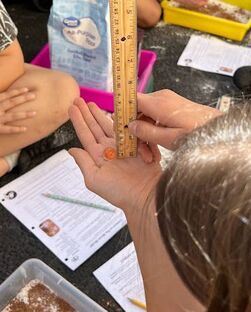
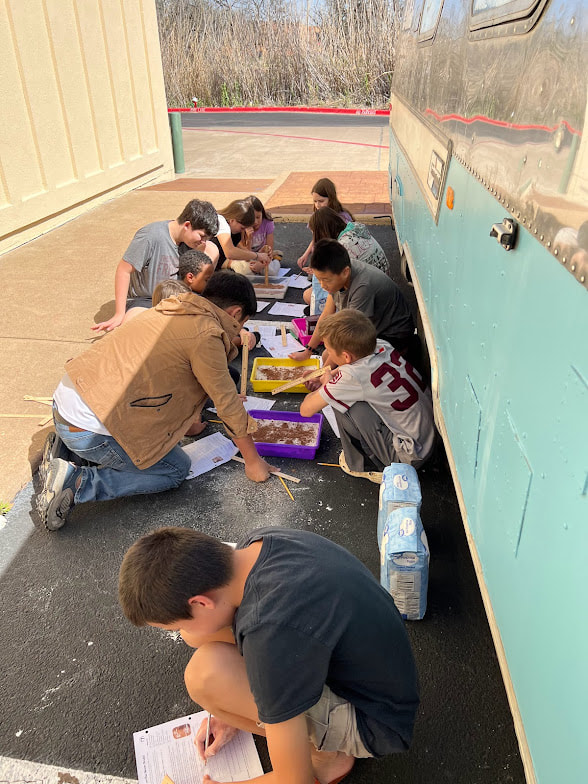
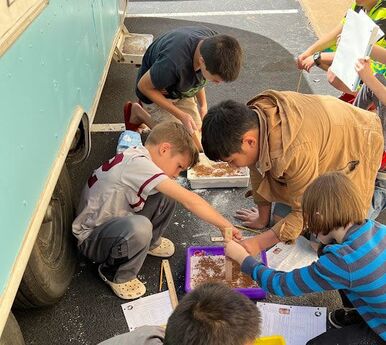
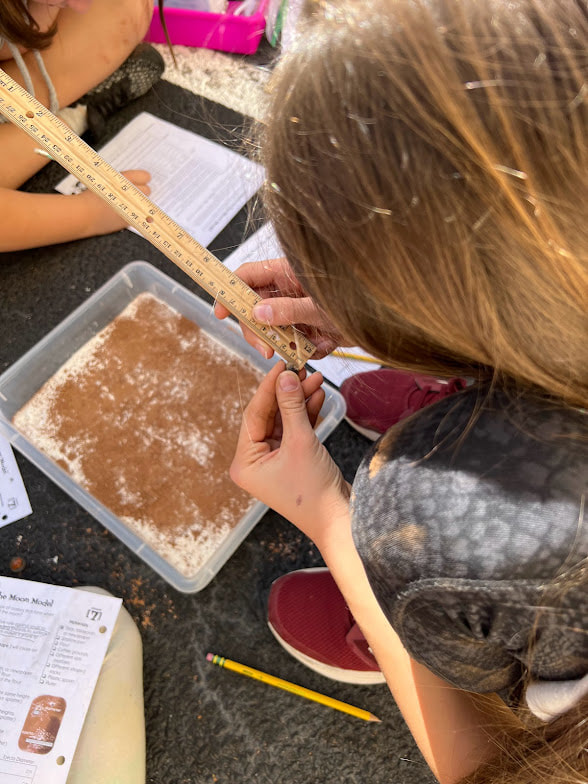
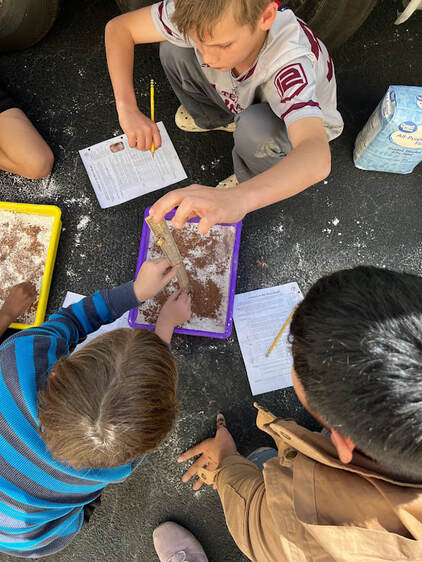
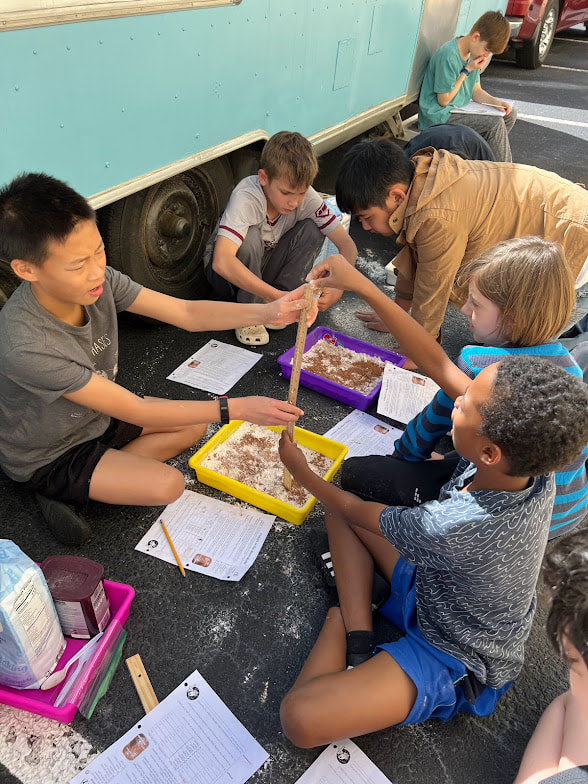
 RSS Feed
RSS Feed